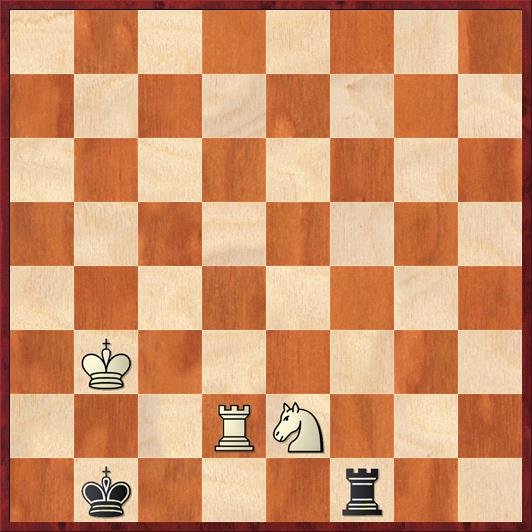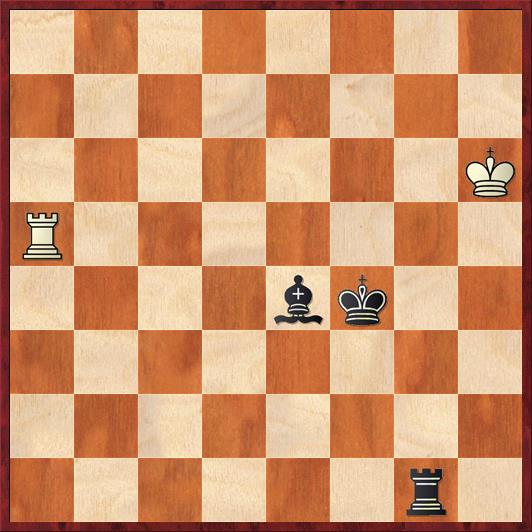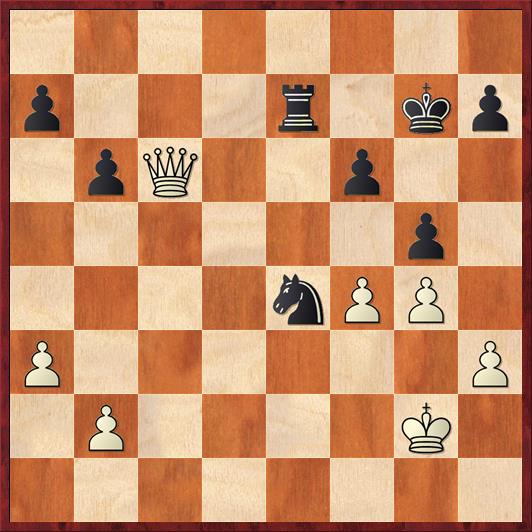Yesterday I watched the PRO Chess League for the first time since week 2. (By the way, I finally found out that PRO is an abbreviation for Professional Rapid Online. That’s why it is obnoxiously capitalized all the time.)
Naturally, I jinxed the team I was rooting for, the San Jose Hackers. In a match where almost nothing went right, they lost to the Webster Windmills, 9½-6½. Through three rounds it was fairly close, with round-by-round scores of 2-2, 1½-2½, and 2-2, but because Webster had draw odds, San Jose needed to win the last round 3-1. Instead they lost 3-1, and thus their season ended.
In the other match that was going on at the same time, the St. Louis Arch Bishops, headed by Wesley So, squeaked by San Diego by a score of 8½-7½. They were aided greatly by So’s 4-0 result, which as I’ll show you below was somewhat miraculous.
So the two St. Louis teams beat the two California teams, and next week’s championship of the Pacific Division will take place on the banks of the Mississippi instead of the shores of the Pacific. But in the age of the Internet, does physical location matter any more? After all, one of the San Jose players was logging in from Azerbaijan, where the closest water is the Caspian Sea.
In the other three division championships next week, we’ll have Norway against Gorky, Montreal against Buenos Aires, and Marseilles against Stockholm.
The commentary by Alex Yermolinsky and David Pruess on last night’s matches was entertaining, as always. The chess was, well, interesting. During the roughly 45 minutes when I was watching, there were several amazing turns of fortune that unfortunately had more to do with blunders than brilliancies.
The first thing we found out was that you can throw endgame theory away when there are only a few seconds left on the clock. We saw a K+R+N versus K+R endgame and a K+R+B versus K+R endgame only a few minutes apart, and in both cases the stronger side won even though the endgames are well-known to be draws.
First, GM Ioan-Cristian Chirila (White) for San Jose and GM Vasil Durarbayli (Black) for Webster reached the following position.
FEN: 8/8/8/8/8/1K6/3RN3/1k3r2 b – – 0 1
Earlier Durarbayli had been in fine shape, but somehow he let his rook get too passive and drifted into, as Yermolinsky said, the “only winning position” for White in this endgame. If Black’s rook were on the eighth rank instead of the first, he would be able to harass White’s king with 1. … Rb8+ and there would be no win for White. But in the game, Black is in a mating net and lost after 1. … Kh1 2. Ra2+ Kb1 3. Nc3+ Kc1 4. Rc2 mate.
But the worst was yet to come. Ten minutes later, Michael Brown (White), playing for St. Louis, reached the following position against Varuzhan Akobyan (Black), playing for San Diego.
FEN: 8/8/7K/R7/4bk2/8/8/6r1 w – – 0 1
Yermolinsky said that in the old days, one seldom even saw the K+R+B versus K+R endgame being played out. Grandmasters just assumed that the defender knew the several drawing techniques, and they would offer a draw. But in the era of Fischer clocks and sudden-death time controls, those gentlemanly ways have changed forever. The endgame usually comes up when one or both players have only a few seconds left per move, and very often the rook and bishop win, even at the GM level.
The position shown is drawn with correct play, but what happened was a comedy of errors that left poor Yermolinsky at a loss for words. Brown played 1. Ra4?, which loses. The correct move is not hard to find: you just have to defend Black’s main threat, which is the check on g6. So 1. Ra6 should draw. Also, the computer points out another cool drawing resource: 1. Rg5!, when the rook can’t be taken due to stalemate. This drives Black’s rook right off the seventh rank and forces some regrouping. A nice resource to know about.
Akobian played 1. … Rg6+ 2. Kh5 (forced). As Yermolinsky pointed out, 2. … Rb6 wins here. White’s rook has to stay on the fourth rank to prevent … Bf3+, and the king cannot move at all. So after 3. Rc4 Rb1, White’s only way out of mate is 4. Kh6, but now 4. … Rb7 forces mate.
If you have to choose a losing position for White, it’s actually better to have the Philidor position, with the king on h4. The win in that position demands considerably more subtlety from Black. The reason is that White can defend checks on the h-file from either side, putting his rook on the fifth rank to stop checks from above or on the third rank to stop checks from below.
Now it was Akobian’s turn to blunder with 2. … Rg8? This leads to something called the Szen position, a known draw, after 3. Ra6. But not known to Brown — or if he did know it, it went clear out of his head with only seconds left.
Brown played 3. Kh6? Rg6+ 4. Kh5. Given a second chance to play … Rb6, Akobian whiffed again with 4. … Rg7? This time, Brown correctly played 5. Ra6, reaching the Szen position. But his joy was short-lived! Akobian played 5. … Rc7 and Brown now played the comical 6. Kh6???, walking into mate-in-one with 6. … Rh7 mate!
After the Brown-Akobian fiasco was done, Pruess apologized to Yermo on behalf of American chess: “Alex can’t handle how bad we are at endgames in the U.S.” Yermolinsky said, addressing all young American players, “Can’t you find two hours away from your [opening] databases and study this endgame so that you don’t embarrass yourself?”
Ironically, the “entertaining” style of chess favored by the PRO Chess League probably discourages true professionalism. There is less incentive to learn to play these highly theoretical endgames right, when you know they will probably be decided by a terrible blunder.
Sandwiched between these two endgames was a third miraculous save or tragic opportunity missed, depending on how you look at it.
8/p3r1kp/1pQ2p2/6p1/4nPP1/P6P/1P4K1/8 w – – 0 1
Joshua Sheng (White) is playing for San Diego against Wesley So (Black). Sheng is the fourth board, a bona fide millennial, born in the year 2000 and rated 2375. Wesley So needs no introduction; he has simply been the most dominant player in the world over the last half year. But in this game, Sheng has So on the ropes, and is playing what could be the game of his young career.
Yermolinsky was explaining the winning strategy. First White should grab as much space as he can with 1. f5, and push his a-pawn to a5. Then he should play Kf3 and threaten to trade into a winning K+P endgame. I’m not quite clear on the last part … but if Yermo says so, there must be some way to do it.
Instead Sheng played 1. h4 gf 2. Kf3 Nc5. It seems as if White is making progress, but So has a surprise for him. 3. Kxf4 Ne3+ 4. Kg3 Re3+ 5. Kg2 Re2+. It’s perpetual check! White has no way to get away from Re1+, Re2+, and Re3+. Unless, of course, he plays 6. Kf3??, which is what Sheng did. So said “Thank you!” and played 6. … Ne5+, forking the king and queen.
Wow. In the space of 6 moves, So went from possibly losing (or at least facing a long hard defense), to an ingenious draw on the spot, to a win! As Yermolinsky said, that’s the kind of year he’s been having.
Some lessons from last night’s proceedings —
For adults, don’t underestimate the kids.
For kids, don’t underestimate the importance of endgames.
For all players, a knight in time trouble is worth double. (This is my revision of the proverb “A knight on the rim is dim.”) In a time scramble, with lots of pieces on the board, knights can be worth as much as rooks, because of their ability to fork other pieces combined with humans’ inability to spot those forks.






{ 2 comments… read them below or add one }
Re diagram 1
“…as Yermolinsky said, ‘the only winning position in this ending,'”
I won this ending in May 2012 against Praveen Nanarajan (Sp?), and this is not the only winning position. Our game was played with a 5 second delay and we went well over 100 moves. Neither one of us was keeping score, so we may have exceeded the fifty move rule.
Normally I too would have offered a draw, but a few weeks earlier I left a rook en prise in an equal position against the same opponent and wanted to get back the half point I had given away for free.
The final position in our game was White Kg6, Nc6,Rc7 Black Kh8, Rb6.
I don’t recall ever getting into R+B vs R for either side,
RN vs R is actually pretty tough. Kasparov beat Polgar in it. There are a handful of winning positions on ChessTempo endgames from this one, and they are very high rated and difficult for me to understand.
In the most important achievement of my life, I won RB vs R against an expert at the US Team East in 2015. This was after a chain of discoveries (this blog’s The Four Endgames of the Apocalypse, then later ChessTempo endgames and some of Nunn’s books) started gettiung me obsessed with certain 5-man endings.
Finally, I drew the worse end of R vs N against Jay Bonin recently, but this one is easier than the others.
I feel like practicing holding these endings against a friend or computer under time delay conditions, a couple times a year or something, could be useful.
I was pleased to spot 1.Rg5! right away.